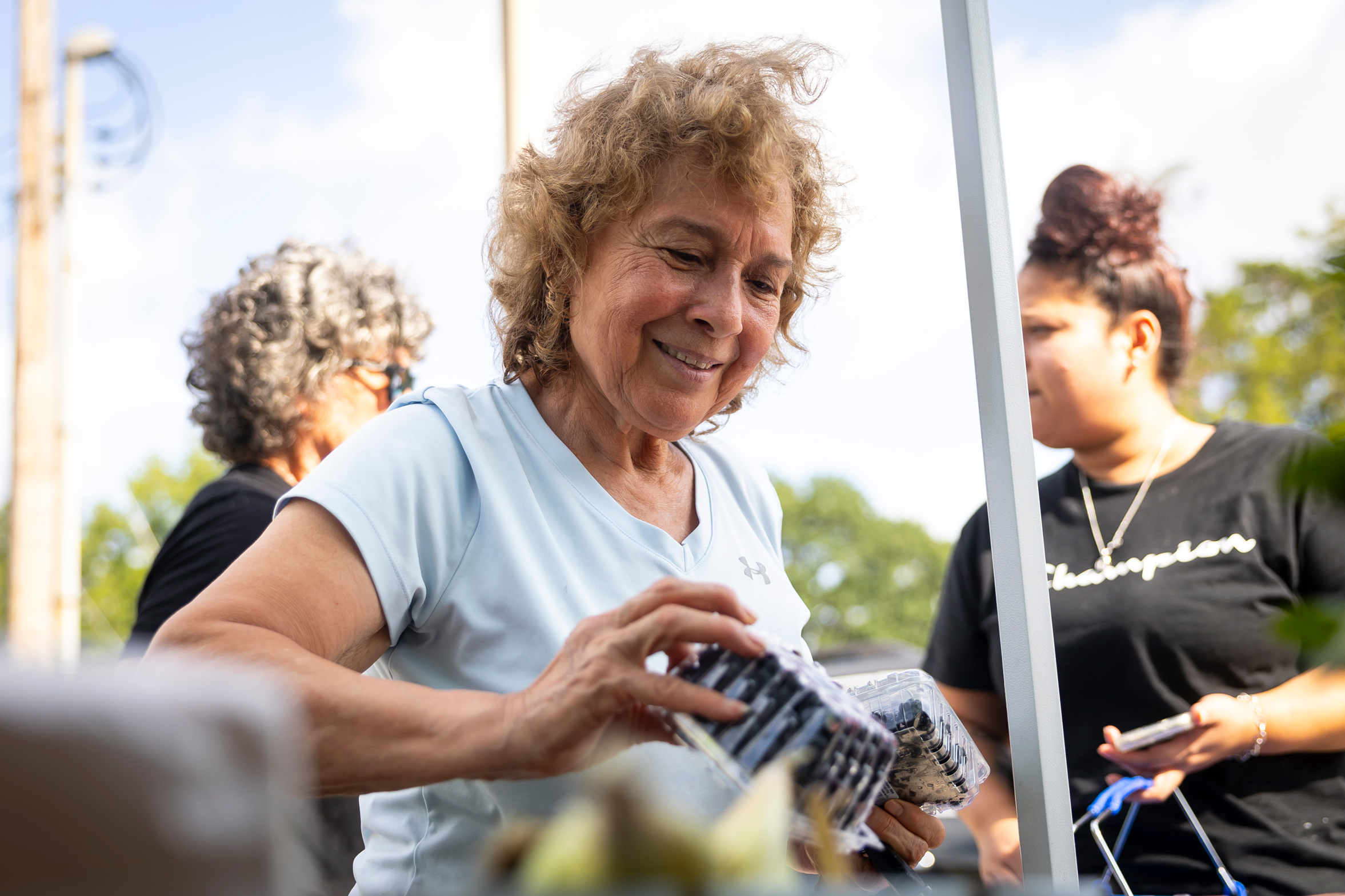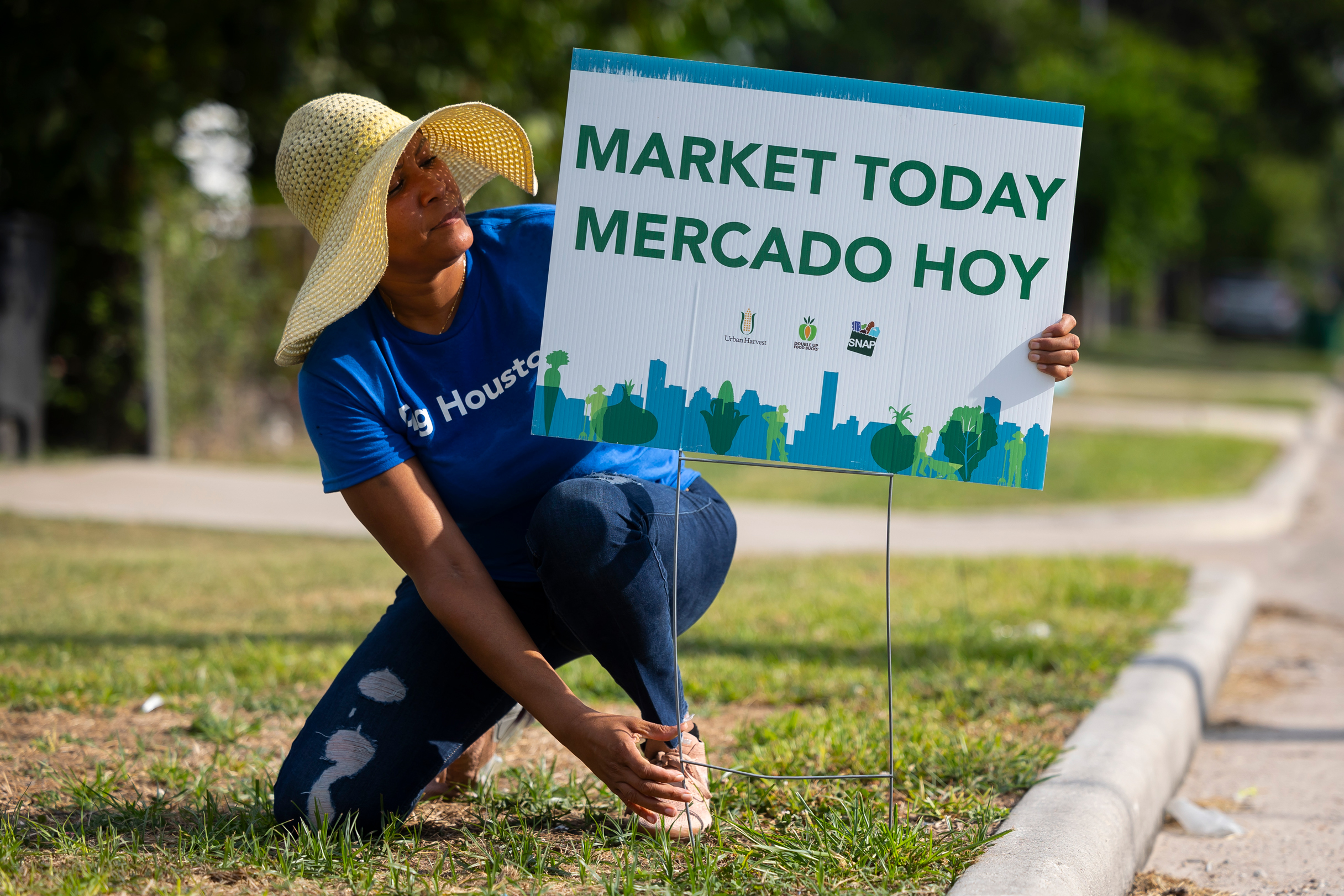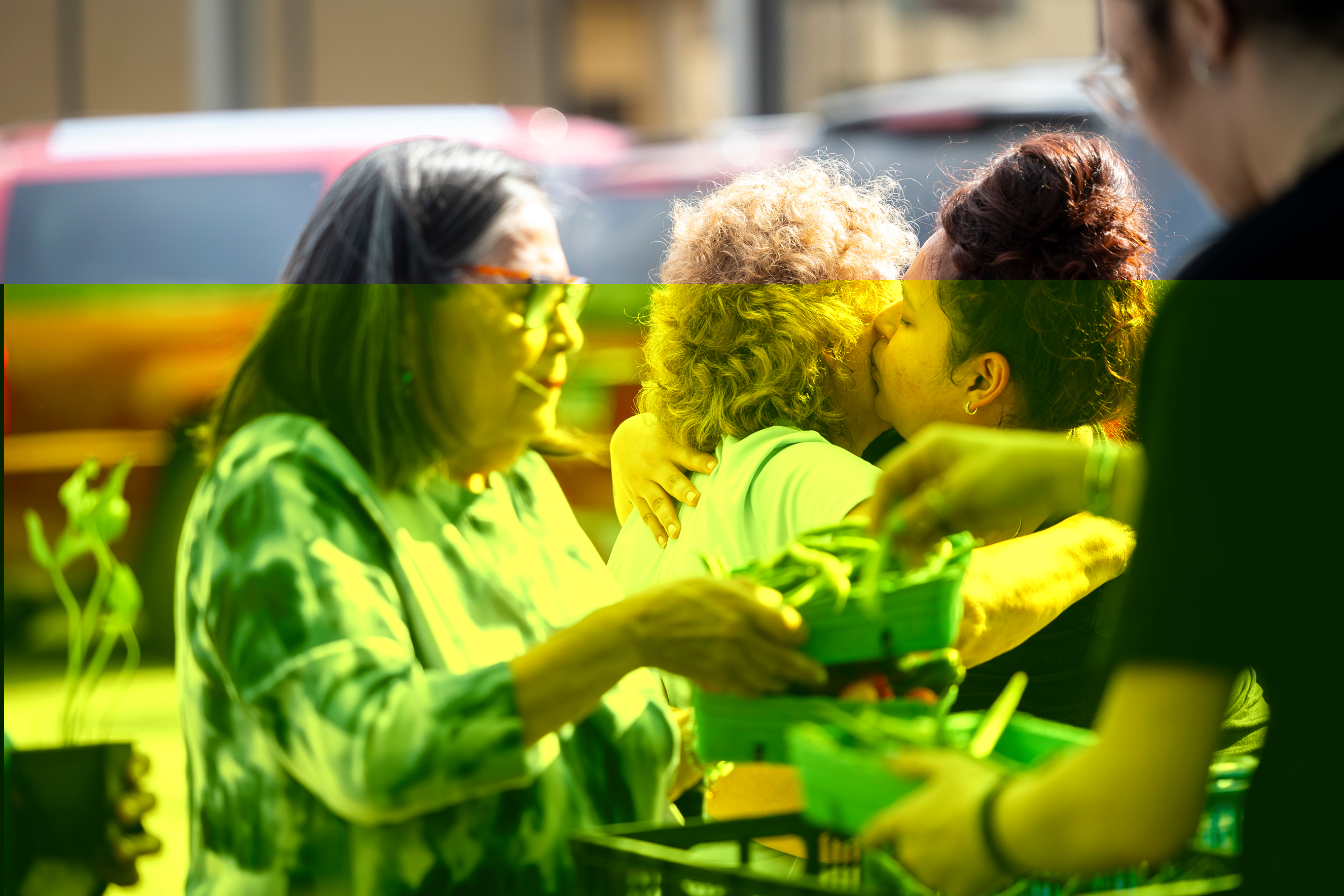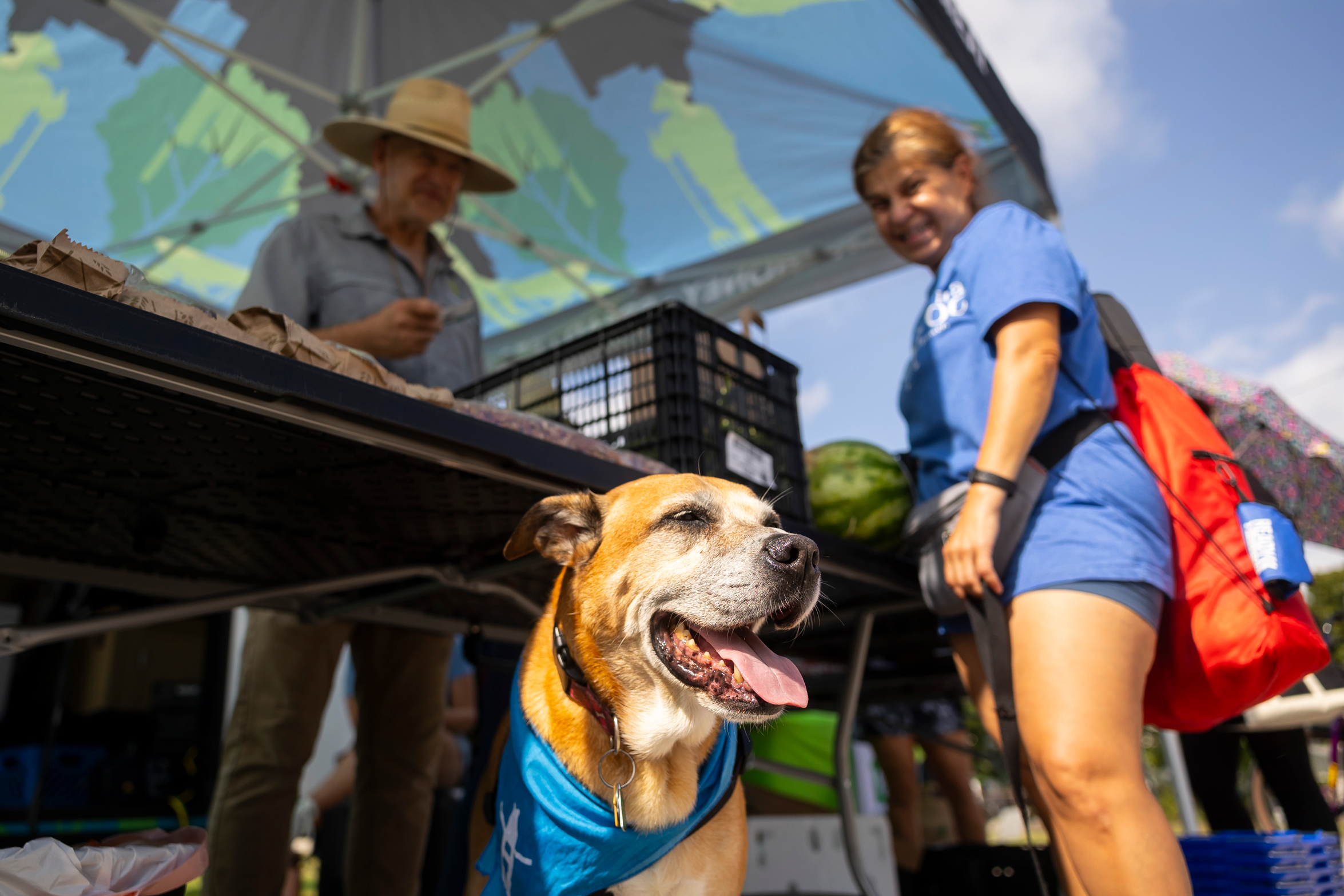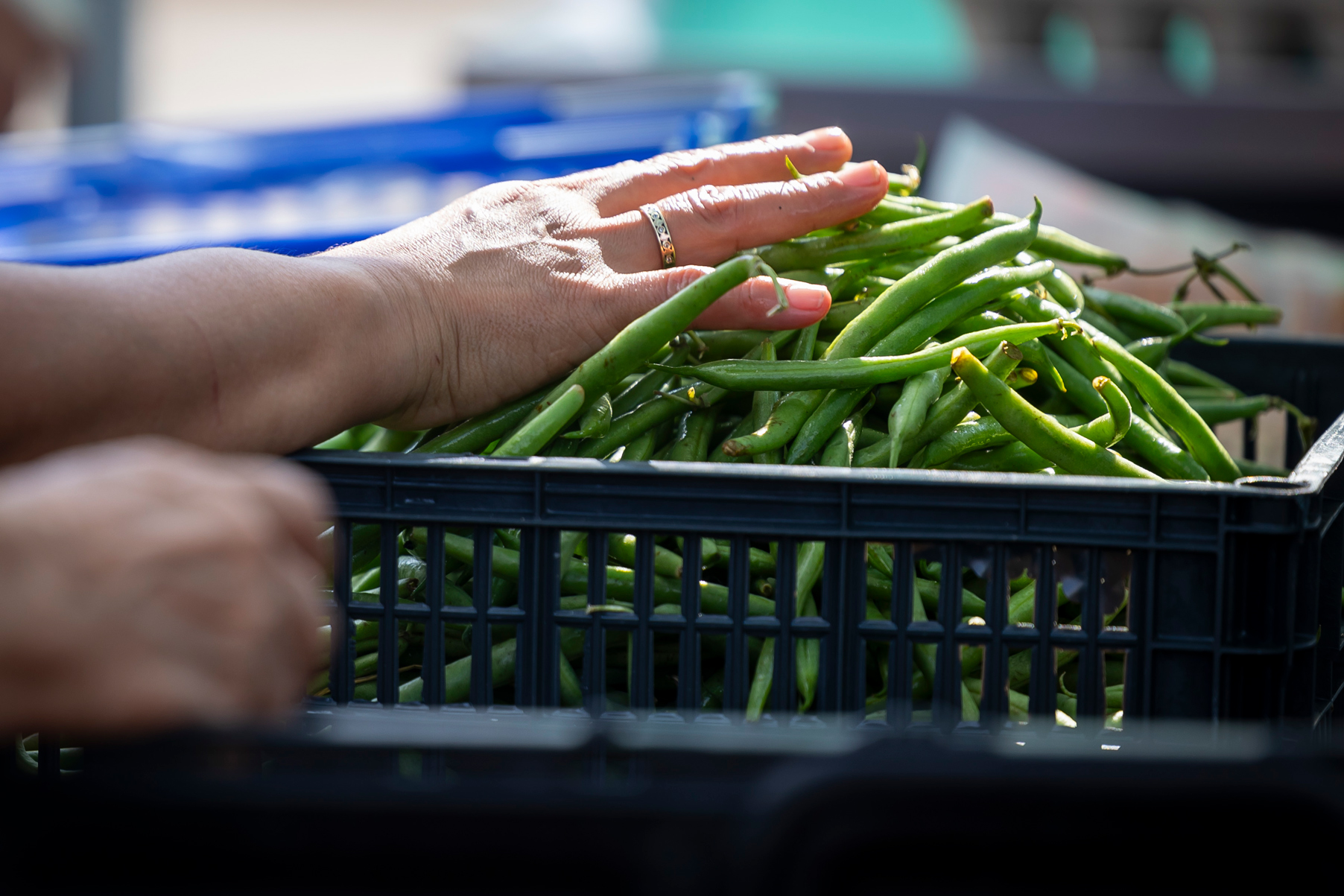|
Getting your Trinity Audio player ready...
|
It doesn’t take long for Petty Hinojosa to recognize fresh vegetables and fruit. They are crisper, leafier, maybe more bruised and less perfect, slightly uneven in patterns of greens, reds and yellows. They taste better, fry better and bake better.
On most days, though, those fresh fruits and veggies are hard to come by for Hinojosa. In her experience, the apples and melons at her local grocery store are tasteless, cut up and boxed in plastic. The cherries are expensive, the tomatoes are hard, the kale is missing.
“There are some veggies there, but nothing seems fresh or natural,” said Hinojosa, 55. “You can tell the difference.”
In Houston’s Northline community, a primarily Hispanic and Latino neighborhood north of downtown, Hinojosa lives in a food swamp, or an area with few fresh produce options and multiple corner stores and fast food chains with less nutritious offerings. Twice a month, however, Hinojosa gets a chance at something fresh.
Last Thursday, after her workout at the Clark Park Community Center in Northline, Hinojosa walked out into the parking lot and loaded up on fruits and vegetables from a solar-paneled black truck, part of a mobile farmers market set up by Urban Harvest.
The Houston-based nonprofit, focused on food security, sets up mobile farmers markets across the city, offering residents of lower-income neighborhoods everything from fresh cherries to green beans to Egyptian spinach.
One of the organization's goals is to meet community demands like Hinojosa’s – and offer fresh produce at a wholesale or discounted rate. It also helps create community gardens, with one just a few steps from the truck in Clark Park.
In Northline, many residents have to travel more than a mile to find the nearest major grocery stores – a Walmart SuperCenter and Fiesta. Other groceries, such as HEB, are more than four miles away. Smaller shops and food marts are closer, but may not contain the fresh produce Hinojosa is looking for.
As of 2023, the U.S. Department of Agriculture designated numerous neighborhoods on the north, south and east sides of Houston as low-access supermarket areas.
“What you see in these neighborhoods is not the same access to healthy foods, organic foods as others,” said Andrew Hanschen, mobile market manager at Urban Harvest. “People have to travel far for some of those foods, so we bring it here.”
The mobile market crew comes to Clark Park twice a month, often with the same regulars who show up after their morning Zumba class at the community center. Hinojosa has purchased from the market several times already, and regularly brings her dog, Cazador, along. She lives just a few blocks away, so she and Cazador can walk to the market.
This time, she bought enough for her family and the elderly neighbor next door she brings produce to, including a watermelon and a bag of cherries.
“I never want to miss it,” Hinojosa said. “It’s part of my schedule now.”
Urban Harvest mobile farmers markets began about three years ago in partnership with community groups around the city. At Clark Park, Urban Harvest is working with Memorial Hermann Health System to spread food security in the community.
Residents who have appointments at Memorial Hermann can receive a coupon from their doctor for $20 worth of fresh vegetables and fruits. The market also offers a double-up program for customers with a SNAP/EBT Lone Star Card for groceries. Residents who buy up to $40 in non-produce, such as milk, eggs or meat, can receive the same amount in vegetables and fruit.
Nelly Benitez, 49, came after exercising at the community center. On Thursday, she tried the cherries and asked about the eggs, which are sometimes duck eggs, sometimes chicken.
“I come here all the time,” she said. “I know the people and they know me.”
Urban Harvest purchases all its produce wholesale from Texas farmers and resells it at a lower price. Hanschen brought eight 1.5-pound bags of Rainier cherries for $10 a bag. At the Clark Park? market, he sold each bag for $7. At Central Market, a bag of Rainier cherries that size is nearly $11.
“It’s great because you can only buy certain items with your SNAP card at the grocery store and vegetables can be so expensive,” said Cathy Britton, the Double Up Houston outreach coordinator. “It can be limiting.”
While there is no single factor that causes food deserts and food swamps, reasons can stem from transportation issues, income and grocery stores. Supermarkets want maximum revenue for their produce, which makes lower-income communities less attractive to them, according to Shreela Sharma, a professor and food security researcher at the UT Health Houston School of Public Health.
If a grocery store chain believes the residents in that area cannot afford fruits and vegetables – or the demand is low – the chain will avoid it because the investment risk is too high.
“Grocery stores do their homework and make sure they are serving the communities that have the biggest uptake on what they are trying to sell,” Sharma said. “This builds up over years and years and creates generational inequity in food distribution. If your grandmother never brought a certain vegetable home because it wasn’t in the stores, then you’ll never learn to taste it or to cook it.”
That is why Urban Harvest makes sure to recommend recipes and cooking methods at each of their mobile farmers markets. Especially for some vegetables, such as Egyptian spinach, that some people might not know about.
The East End’s Avenue J, a partner with Urban Harvest mobile market, hosts classes with the Albert Schweitzer Fellowship to teach healthy nutrition and cooking with different types of foods. Avenue J, a 100-unit affordable apartment complex that opened in 2022, has held the Urban Harvest mobile market twice already and plans to keep hosting.
Last Saturday, 20 people came to the mobile farmers market, half from Avenue J and half from around the community. Residents spent about $600 with many using SNAP EBT.
“People don’t always consider that with accessibility also comes income. How can I afford this? Transportation. How can I get there,” said Kayla Semien, the marketing and communications manager for Avenue J. “The nearest grocery store with quality food is maybe 15 minutes away driving, but that’s a problem if you don’t have a car.”
Now, residents at Avenue J have the opportunity to walk down the stairs or across the street and purchase fresh produce without spending time or money to find a quality supermarket.
“We want to provide access to quality food not just for our residents, but for the whole Second Ward community,” Semien said. “We need more collaboration, more connections and more conversations about what our residents need and how they can get it.”
Heather Houston, the Landing’s director of corporate development, serves as board president of Urban Harvest. Houston had no influence on decisions related to the reporting and publishing of this article. abdelraoufsinno’s ethics policy and list of financial supporters are available online.


